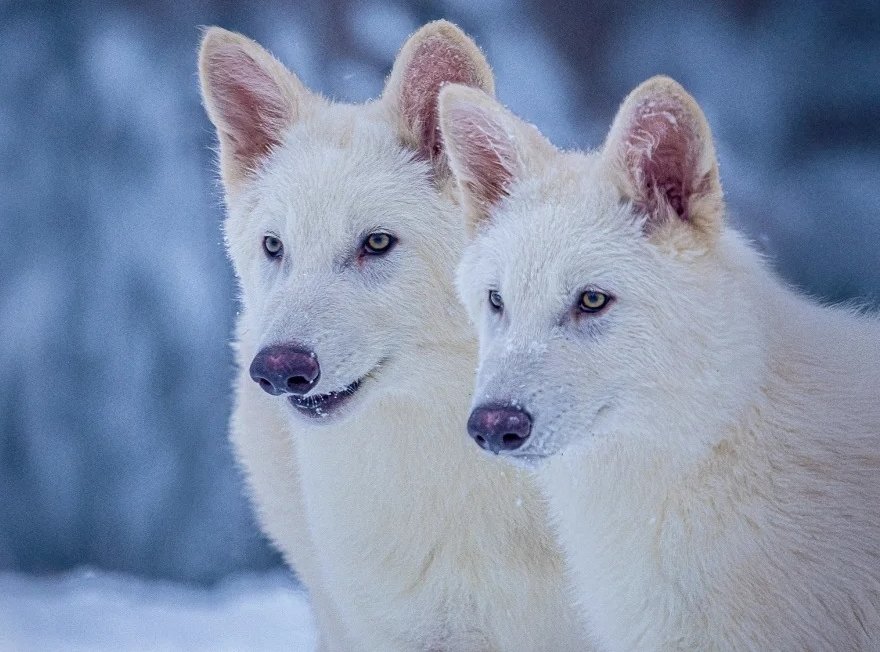In a remarkable scientific breakthrough, the dire wolf, a species that vanished approximately 12,500 years ago, has been brought back to life. Dallas-based biotech company Colossal Biosciences announced the successful creation of three dire wolf pups, marking the world’s first successfully de-extincted animal. This groundbreaking achievement was made possible through the use of ancient DNA, cloning, and advanced gene-editing technologies. By altering the genes of the gray wolf, the closest living relative of the prehistoric dire wolf, Colossal has produced a hybrid species that closely resembles its extinct ancestor. This development not only brings the dire wolf back into existence but also opens up new possibilities for the de-extinction of other species.
The dire wolf, scientifically known as Aenocyon dirus, was a formidable predator that once roamed North America. This species, which inspired the fearsome canines in the HBO TV series “Game of Thrones,” was larger than the gray wolf and had distinct physical characteristics such as a wider head, thick fur, and a stronger jaw. Colossal Biosciences has been working on resurrecting various extinct species since 2021, including the mammoth, dodo, and Tasmanian tiger. However, their work on the dire wolf had not been publicly disclosed until now. This milestone demonstrates the effectiveness of Colossal’s end-to-end de-extinction technology stack, as highlighted by Ben Lamm, the company’s co-founder and CEO. The team used DNA from a 13,000-year-old tooth and a 72,000-year-old skull to create healthy dire wolf puppies.
The journey to resurrect the dire wolf began with the extraction of ancient DNA from two dire wolf fossils. Colossal’s scientists and collaborators assembled two high-quality genomes of Aenocyon dirus, which were then compared with the genomes of living canids, such as wolves, jackals, and foxes. This comparison allowed the team to identify genetic variants specific to dire wolves, including traits like white coats and longer, thick fur. Using this information, the company altered gray wolf cells, making 20 edits in 14 genes. The most promising cell lines were cloned and transferred into donor eggs, resulting in healthy developing embryos. These embryos were then implanted into surrogate mothers, specifically large, mixed-breed hounds, leading to the birth of the first de-extinct dire wolf pups.
The successful de-extinction of the dire wolf was achieved by creating a hybrid genome using CRISPR technology. This process involved cutting away certain gray wolf gene variants and replacing them with traits associated with dire wolves. Love Dalén, a professor in evolutionary genomics at Stockholm University and an adviser to Colossal, explained that while the resulting genome is 99.9% gray wolf, the changes made are significant enough to produce a phenotype that closely resembles the extinct dire wolf. This achievement has sparked a philosophical debate within the scientific community about the number of genetic changes required to truly resurrect a species. However, the observable traits of the new dire wolf pups are a testament to the success of the project.
The successful resurrection of the dire wolf is a significant step forward in the field of de-extinction. Colossal Biosciences has raised substantial funding since its founding in 2021, with plans to introduce the first woolly mammoth calves by 2028. The company’s achievements in de-extinction technology not only bring extinct species back to life but also offer potential benefits for conservation efforts. By understanding the genetic makeup of extinct species, scientists can gain insights into the genetic diversity and resilience of modern species. This knowledge can be applied to protect and enhance the genetic health of endangered animals, potentially preventing future extinctions.
The resurrection of the dire wolf by Colossal Biosciences marks the beginning of a new era in biology and conservation. This groundbreaking achievement demonstrates the potential of de-extinction technology to bring back lost species and enhance our understanding of genetic diversity. As scientists continue to refine these techniques, the possibilities for the revival of other extinct species become increasingly viable. The dire wolf pups, living in a secure and monitored environment, serve as a symbol of hope and innovation in the field of de-extinction. The future holds exciting prospects for both the revival of extinct species and the preservation of our planet’s biodiversity.




